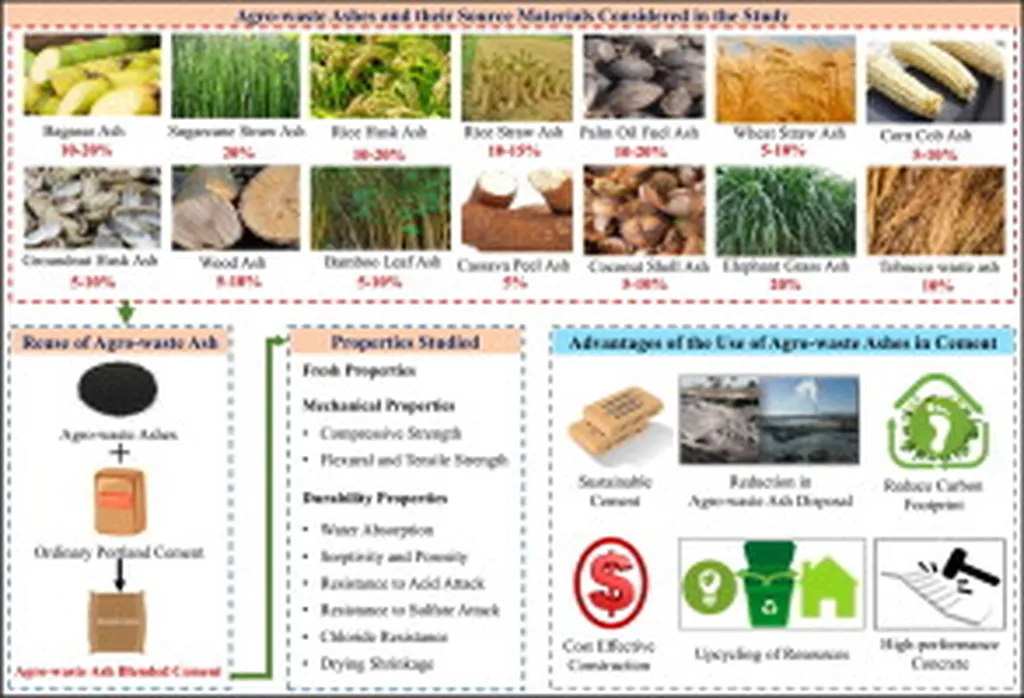In a groundbreaking review published in the *Journal of Materials Research and Technology* (translated from Portuguese as “Journal of Materials Research and Technology”), researchers have shed light on a promising avenue for reducing the construction industry’s environmental footprint. The study, led by Elias Rocha Gonçalves Júnior from the Advanced Materials Laboratory (LAMAV) at the State University of the Northern Rio de Janeiro (UENF), explores the potential of agro-industrial waste as pozzolanic materials in cementitious systems.
The construction sector is a significant consumer of energy and raw materials, contributing substantially to greenhouse gas emissions. Simultaneously, society grapples with the challenge of managing solid waste, driven by population growth and consumption trends. Gonçalves Júnior and his team have identified an emerging solution that addresses both issues: the use of pozzolanic materials derived from waste.
The review, which analyzed 216 records from the Scopus database, revealed a notable increase in publications on this topic, particularly between 2008 and 2025, with India leading the way. This surge in interest underscores the growing recognition of the potential benefits of agro-industrial waste as pozzolanic materials.
The study highlighted four key types of waste ashes with significant pozzolanic potential: rice husk ash (RHA), palm oil fuel ash (POFA), bamboo leaf ash (BLA), and sugarcane bagasse ash (SCBA). These materials not only demonstrate pozzolanic activity but also enhance the performance of cement-based systems. For instance, incorporating 20% RHA into cement mixtures resulted in a 22% increase in compressive strength at 28 days compared to the control mix. Similar improvements were observed with other ashes, depending on dosage and treatment conditions.
“These findings suggest that agro-industrial waste ashes can be effectively utilized as supplementary cementitious materials, offering a sustainable alternative to traditional pozzolans,” said Gonçalves Júnior. “This approach not only reduces the environmental impact of the construction sector but also provides a viable solution for waste management.”
The implications of this research are far-reaching. By valorizing agro-industrial waste, the construction industry can reduce its reliance on virgin materials, lower its carbon footprint, and contribute to a circular economy. Moreover, the use of these alternative pozzolanic materials can enhance the durability and performance of cementitious systems, offering economic benefits to the energy sector and beyond.
As the world seeks sustainable solutions to address environmental challenges, this research provides a compelling case for the adoption of agro-industrial waste as pozzolanic materials in cementitious systems. The findings discussed in this paper may pave the way for future developments in the field, shaping a more sustainable and resilient construction industry.
The study, titled “Use of agroindustrial wastes as pozzolanic materials in cementitious systems: A review,” was published in the *Journal of Materials Research and Technology*, offering a comprehensive analysis of the potential of agro-industrial waste in the construction sector.

